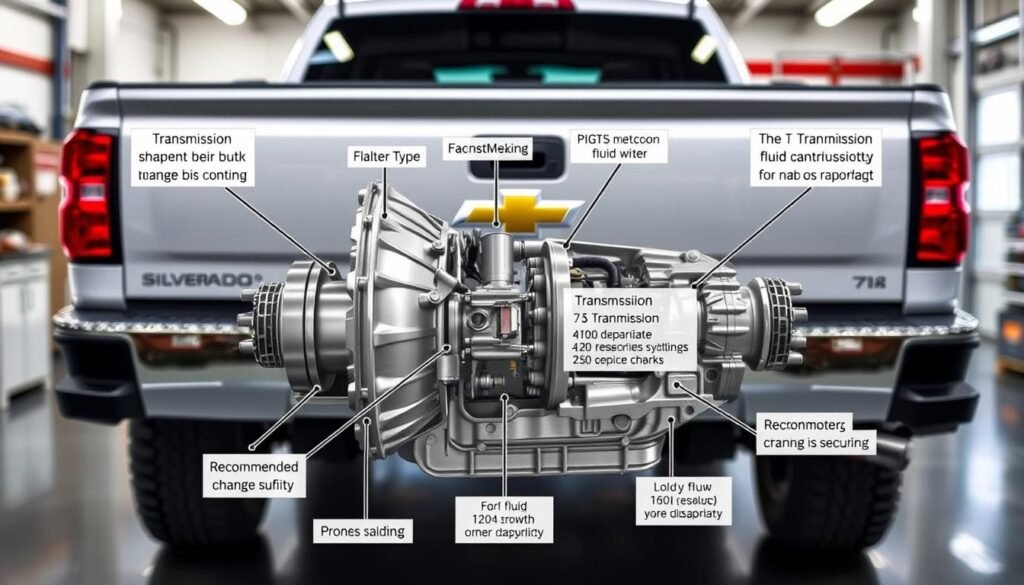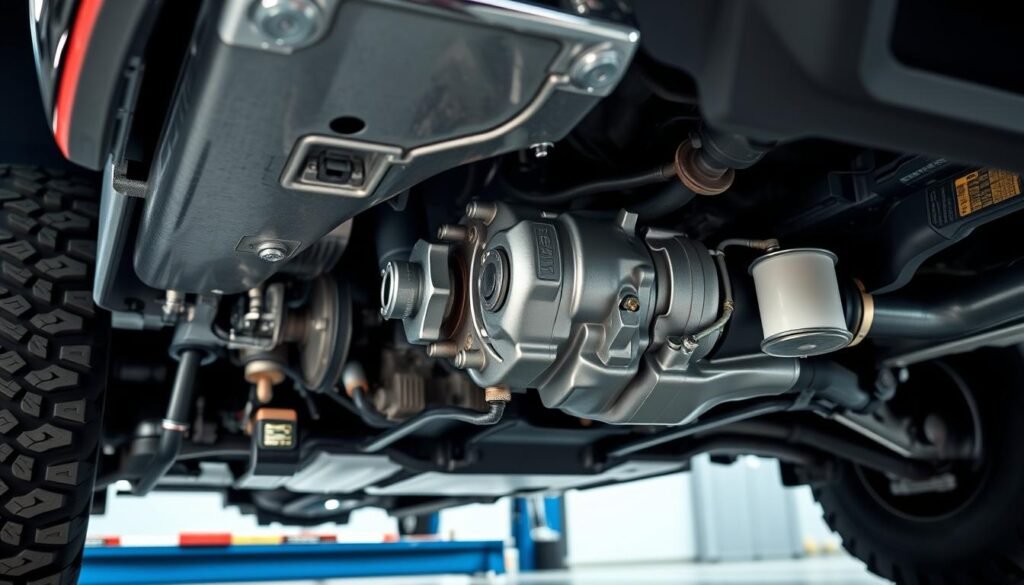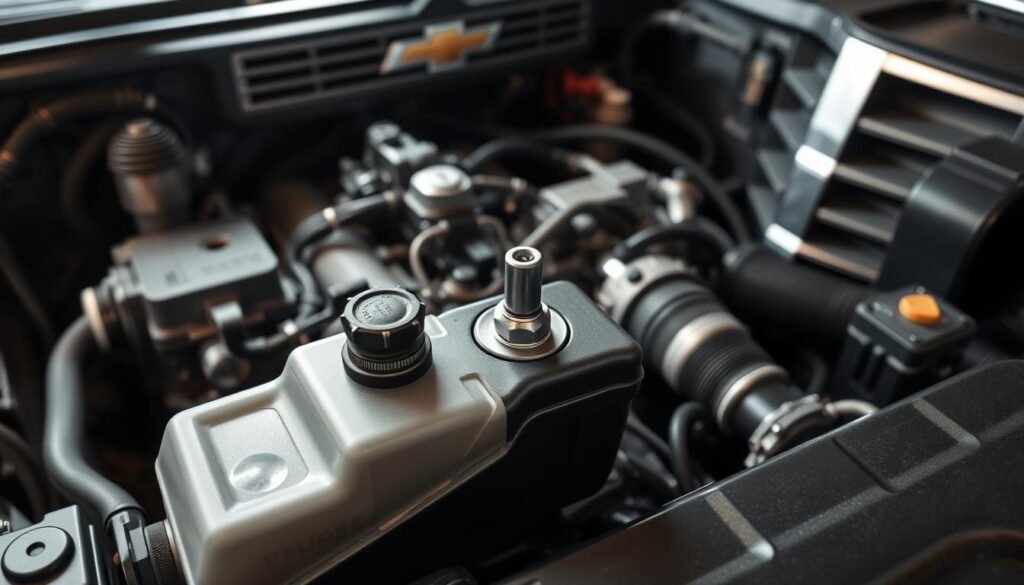Chevy Silverado Transmission Fluid Chevy Impala Years To Avoid? Exclusive Tips
Learning Chevy silverado transmission fluid chevy impala years to avoid and it’s crucial for smooth and efficient operation.
It helps protect the complex parts inside your transmission. This keeps your truck running well for a longer time.
It’s important to regularly check and change this fluid to avoid overheating and damage. This can save you from expensive repairs later.
You’ll also learn which Chevy Impala models to steer clear of for the best reliability. With the right info, you can handle transmission issues confidently and maintain your vehicle’s performance.
Importance of Regular Transmission Fluid Maintenance
Keeping up with transmission fluid changes is key for your Chevy Silverado’s health. The fluid breaks down over time from heat and dirt, causing more wear on the transmission.
To keep things running smoothly, switch out the fluid every 25,000 miles. Though some wait until 50,000 miles, regular maintenance lessens the chance of expensive fixes.
If you skip changing the transmission fluid, problems start to show. Old fluid can’t protect and cool the transmission parts well.
This makes the transmission hotter and parts like gears and seals wear out faster. Putting off maintenance can lead to big transmission troubles.
You might face issues like slipping gears, hard shifts, or even total failure. Fixing these problems can cost a lot more than frequent fluid changes.
Regular care saves you money and keeps your Chevy Silverado running well.
Recommended Chevy Impala Models For Reliability
Some Chevy Impala models get high marks for being reliable. The years 2006 to 2013 are especially praised.
These cars are well-built and have fewer problems. People like how the transmission works, as it helps the car last longer.
These Chevy Impalas are not only dependable but also comfortable and good on gas. Looking for a Chevy Impala?
Focus on these years for a worry-free choice. A good transmission is key, just like keeping your Chevy Silverado’s transmission fluid fresh.

Common Issues with Chevy Impala Models
Chevy Impala models are widely liked, but they come with their own problems. A lot of people have issues with the transmissions.
For example, those made from 2004 to 2010 often have rough shifts, gears changing unpredictably, and the transmission might even fail.
Good care is key to avoiding these transmission issues. If you don’t change the fluids on time, things could get worse, causing expensive repairs.
Apart from rough shifting, some owners also notice the car hesitating or having trouble getting into gear.
This could mean there are more serious transmission problems that need quick action. Fixing these issues early is important for saving time and money.
Being proactive about your Chevy Impala’s care can make it last longer and perform better.
Look out for any warning signs and talk to your mechanic for a detailed check-up to keep your car in good shape.
What is Chevy Silverado Transmission Fluid Specifications?
To ensure your Chevy Silverado runs smoothly, it’s vital to use the right transmission fluid. The key type to use is dexron vi transmission fluid.
This kind is approved and tested by General Motors. It helps your transmission work best and protects its parts.
While you can find synthetic versions of dexron vi transmission fluid, they’re not required unless your manual says so.
Stay away from fluids marked as “compatible,” as they might not meet GM’s high standards.
Knowing the correct Chevy Silverado transmission fluid specifications is important for your vehicle’s transmission to last long and work reliably.

| Fluid Type | Specifications | Comments |
|---|---|---|
| Dexron VI | GM approved | Maintain optimal performance |
| Synthetic Variant | May be used | Check owner’s manual |
| Compatible Fluids | Not recommended | May not meet GM standards |
Chevy Silverado Transmission Maintenance Tips
Keeping your Chevy Silverado’s transmission in good shape is key to its durability and performance. Regularly checking and changing the transmission fluid is very important.
You should check your fluid every 25,000 to 50,000 miles. This depends on how you use your truck.
If you have a manual transmission, change the fluid every 30,000 to 60,000 miles. For automatic transmissions, you might wait between 30,000 and 100,000 miles.
But, if you often tow, drive in extreme weather, or have lots of stop-and-go traffic, check it more often. Always check your owner’s manual for what’s best for your specific model.
When changing the fluid, make sure to use the right type. For newer models, GM recommends Dexron VI fluid. This synthetic fluid helps protect better and improves performance.
Also, replace the transmission filter and seal during this maintenance. It helps your transmission work better and last longer.

| Transmission Type | Recommended Fluid Change Interval | Severe Driving Conditions |
|---|---|---|
| Manual Transmission | Every 30,000 – 60,000 miles | Closer to 30,000 miles |
| Automatic Transmission | Every 30,000 – 100,000 miles | Closer to 30,000 miles |
Following these Chevy Silverado transmission maintenance tips will keep your truck running well for many years.
Chevy Silverado Transmission Fluid Change: When and How?
It’s important to know when to change your Chevy Silverado’s transmission fluid. This can greatly affect how long your vehicle lasts and how well it runs.
Usually, you should do this every 25,000 to 50,000 miles. But, if you often drive in tough conditions like towing or in busy traffic, you might need to do it more often.

- Preparation: Make sure your vehicle is on a flat surface. Put on the parking brake and use wheel chocks for extra safety.
- Draining the Old Fluid: Find the transmission pan. Use a drain plug if there is one to let the fluid out into a container. If there isn’t a plug, take off the pan bolts to drain the fluid.
- Removing the Transmission Pan: Once the fluid is out, take off the transmission pan with care. Clean it well to get rid of any dirt or metal bits.
- Replacing the Filter: Remove the old filter and put in a new one, making sure it fits right.
- Installing the Pan: Place a new gasket on the transmission pan, put it back, and tighten the bolts evenly. This helps avoid leaks.
- Refilling with New Fluid: Fill up the transmission with Dexron VI fluid. Use a funnel to pour it into the dipstick tube.
- Checking Fluid Level: Turn the engine on and move the gearstick through all its positions. Check the fluid level with the engine still running and top up if needed.
Always check your owner’s manual for the right fluid type and how much you need. This ensures your Chevy Silverado runs smoothly.
Chevy Silverado Transmission Flush: Benefits and Process
A Chevy Silverado transmission flush is very important for your car. It does much more than a normal fluid change. This process removes almost all the old transmission fluid.
It makes your transmission cleaner and work better. One big plus of this flush is getting rid of contaminants and sludge.
These things can harm your transmission’s function. By doing flushes regularly, your car shifts smoothly and runs more efficiently.
When it’s time for a flush on your Chevy Silverado, always stick to the car maker’s advice. Using the right tools is key to avoid expensive errors.
If not done right, some bad stuff might stay inside, causing trouble later. How often you should do this can vary.
It might be every 30,000 to 100,000 miles, based on how and where you drive. To be sure, check your car’s manual or ask a skilled technician what’s best for your car.
| Service | Fluid Replacement Amount | Contaminant Removal | Recommended Frequency |
|---|---|---|---|
| Transmission Flush | Nearly 100% | High | Every 30,000 – 100,000 miles |
| Fluid Change (Pan Drop) | About 33% | Low to Moderate | Every 30,000 miles |
Chevy Silverado Transmission Fluid Hevy Impala Years To Avoid?
Looking at the Chevy Impala, it’s key to steer clear of certain chevy impala years to avoid. Some models stand out for being reliable.
Others, however, are known for major reliability concerns. The 2004 and the start of 2005 models, in particular, had big transmission issues.
These could lead to expensive fixes. Doing your homework can save you a lot of trouble later. The models from these specific years had problems like transmission slipping and irregular shifting.
Being aware of these years helps you choose wisely and can improve your driving experience. Opting for models with positive reviews and fewer complaints means a more reliable car.
Avoiding these problematic Chevy Impala years can give you a smoother driving experience.
Best Practices For Maintaining Chevy Silverado Transmission Health
Keeping your Chevy Silverado’s transmission in top shape is simple. Just follow some key steps. Regularly check your transmission fluid’s level and its quality.
This is crucial for keeping your truck running smoothly. Change the fluid based on how much you drive—usually every 30,000 to 60,000 miles for manual gearboxes, and 60,000 to 100,000 miles for automatic ones.
Always look at your owner’s manual to know the exact times and types of fluid you need. Healthy transmission fluid looks deep red and is free of any bits.
If it’s dark or gritty, you should change it. Keeping an eye on the condition of your transmission helps avoid bigger problems later.
Also, watch for any issues with shifting gears. Fixing them early can save you both time and cash.
It’s also key to watch the temperature of your transmission, especially when towing heavy loads or on long drives. Normal temperatures are between 160°F to 175°F.
But with more weight or longer trips, it can get as hot as 200°F to 220°F. To keep things cool, think about getting an extra cooler or using your tow-haul mode.
This helps manage the heat. Following these tips can make your Chevy Silverado’s transmission last longer and work better.
Don’t forget to check your owner’s manual. It has specific advice and fluid details to help your truck perform its best.
Conclusion
Taking good care of your Chevy Silverado’s transmission fluid is key to keeping your truck running well.
It’s important to know what type of fluid your truck needs and when to change it. Doing so helps avoid common problems and makes your drive smoother.
Never underestimate the value of routine maintenance. It not only makes your transmission last longer but also saves you money on big repairs later.
This article has given you the knowledge to keep your Silverado in top shape for the long haul.
By following these maintenance tips, you’ll keep your vehicle reliable and enjoy a worry-free drive.
Remember, timely care for your transmission today prevents costly issues in the future.
FAQs
How often should I change the transmission fluid in my Chevy Silverado?
Change the transmission fluid every 25,000 to 50,000 miles. This depends on how you drive.
What type of transmission fluid should I use for my Chevy Silverado?
Use Dexron VI transmission fluid. GM specifically tests and licenses it for the best performance.
What are the common issues with certain Chevy Impala models?
Models from 2004 to 2010 often have rough shifting. They also may change gears when not expected. Transmission failure is another big problem during these years.
Which Chevy Impala years are recommended for reliability?
The 2006 to 2013 Chevy Impala models are reliable. They have good feedback about how their transmissions perform.
What is the difference between a transmission fluid change and a transmission flush?
A transmission fluid change replaces some fluid. A flush gets rid of all old fluid and dirt, making the system cleaner.
Are there specific Chevy Impala years to avoid?
Yes, be careful with the 2004 and early 2005 models. These often have big transmission problems.
How can I maintain my Chevy Silverado’s transmission health?
Check your transmission fluid level regularly. Change the fluid based on how much you drive. Also, watch out for any shifting problems or signs of overheating.
What are the signs that my Silverado’s transmission fluid needs changing?
If you smell something burnt, it’s a sign. Discolored fluid (dark brown or black) or a gritty texture also warn you. You might notice delayed shifts or slipping gears, too.







